
ה"ב PESACH 5771 א”עשת חספ
By Rebbetzin Dini Freundlich
Dear Reader,
During the past year, a heated debate took place regarding the kosher certification of restaurants and hotels that are open to the public (not private parties). What are the responsibilities of the certifying agency? How far does the hechsher go? Is the kashrus agency only responsible for the kashrus of the food, or is it the agency’s responsibility to ensure a kosher atmosphere as well?
By Rabbi Ahron Haskel
Some say the hechsher is there to make sure the food is kosher and that’s all. It should be of no concern to the certifying agency what other activities go on in the restaurant—for example, what kind of background music is played, or how the employees dress. The rabbi is not the monarch of the establishment; he should do what he was commissioned to do and nothing more. As the saying goes, “Live and let live.”
By Rabbi Yitzchak Gornish
However it is the position of the ~ that it is the agency’s responsibility to ensure a “kosher-friendly” environment as well. In fact, at the ~ we believe that is exactly what we have been commissioned for.
By Rabbi Don Yoel Levy
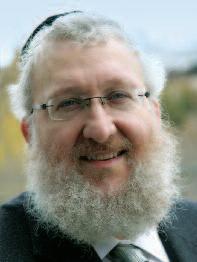
CHASSIDIC
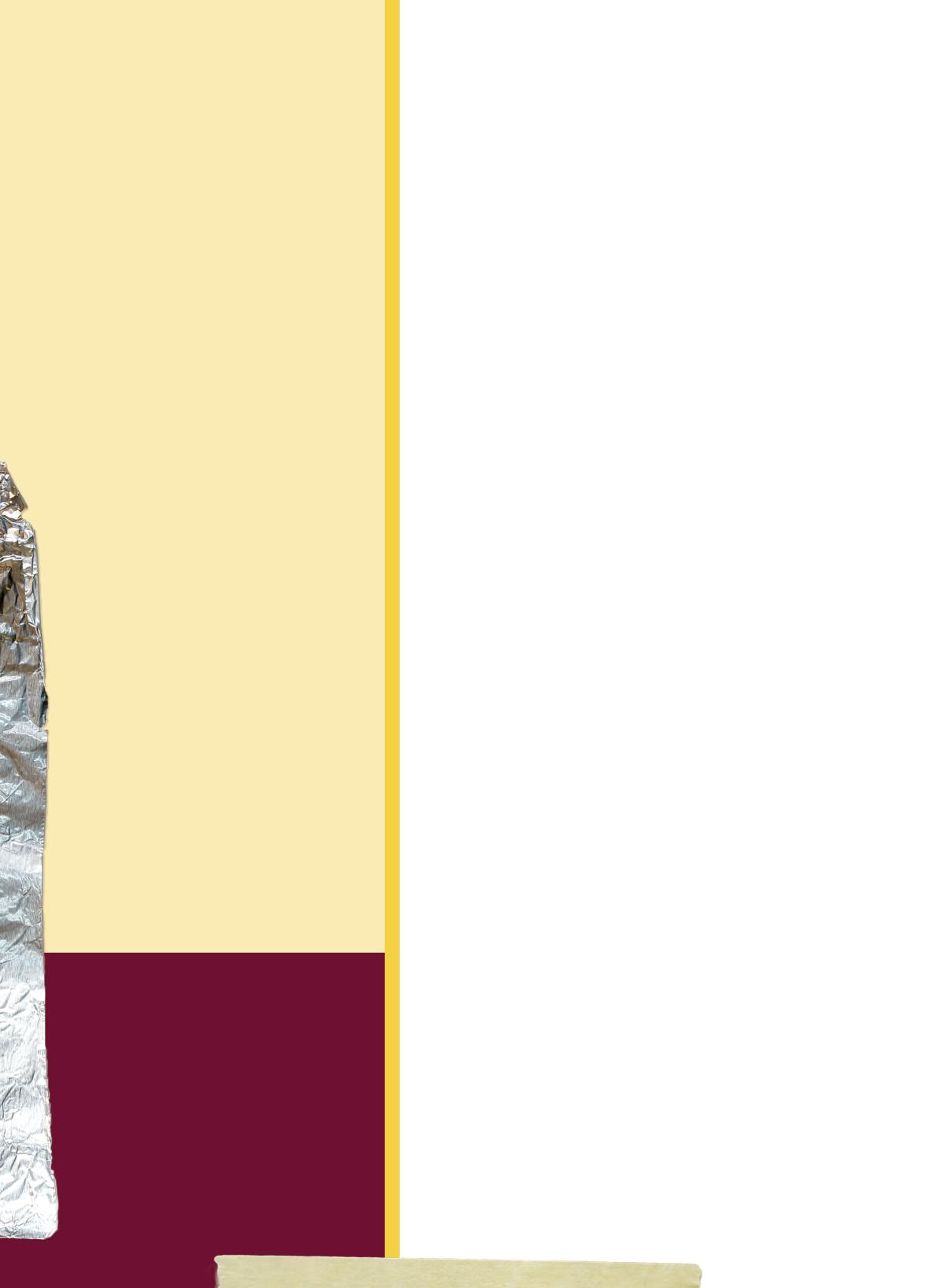
Compiled by Dina Fraenkel
SOUL
The main reason a food establishment gets kosher certification is to draw as many kosher consumers as possible. The ~ maintains that many kosher consumers would not enter a restaurant that was not “kosher-friendly” even if the food was kosher. For a very drastic example, just to prove a point, if the restaurant was geared to a very immodest atmosphere, most kosher consumers would not go there even if the food was kosher.
Here is another example—every Pesach, many families go to a Kosher for Passover hotel. The ~ feels a responsibility to ensure a kosher atmosphere in the entire hotel—from the pool deck to the pool table. Others say, “No! Supervise the kitchen and dining room and that’s it.”
But, you can just imagine the turmoil and complaints we would get if the mashgichim said it was not their place to make sure that there was a proper eruv at the hotel and people were stuck in their rooms on Shabbos with their infants and no food! Did you know that when the ~ certifies a hotel for Shabbos or Pesach, prior to granting certification, in addition to all the obvious investigations and arrangements that we do, we need to ensure a way that the guests can enter and leave their rooms even with the electric locks on the doors (either by disabling them or by arranging a hotel staff member on every floor to open the door when needed)? We even have to check the lavatories to make sure that they can be used on Shabbos and YomTov (many of the fancier hotels use electronic eyes to control those devices and they should not be used on Shabbos). Some hotels even have electronic monitoring devices
KOSHER SPIRIT Pesach 5771
EDITOR: Dovi Scheiner ASSOCIATE EDITOR: Dina Fraenkel DESIGN & PHOTOGRAPHY: SpotlightDesign.com 3 4 5 6 8 12 13 14 18 20 22 23
YOUR SPIRIT QUESTIONS FOR THE ~ HEALTHY SPIRIT Potatoes KEEPING KOSHER IN... CHINA (and for Pesach, no less!)
EDITOR-IN-CHIEF: Rabbi Chaim Fogelman
SHARE
KOSHER WINE REVOLUTION
THE
MAKKOS AFTER-PESACH RECIPE
LAWS OF KOSHER TZITZIS
10
Schlissel (Key) Challah THE
RABBI BEREL LEVY OB”M A Pioneer in Kashrus
BEHIND THE ~
WHO’S
Interview with Rabbi Yakov Perlov
INSIGHTS: THE SPLITTING OF THE SEA
NUTRITION
welcome your comments, submissions and letters to the editor. Mail: 391 Troy Avenue, Brooklyn, NY 11213 Email: editor@kosherspirit.com
We
in every room sending a signal to housekeeping to alert them when you have vacated your room in order to enable someone to clean your room.
That’s why the ~ knows that not just the food, but the entire establishment, needs monitoring. A place that has a hechsher should be a place where the majority of kosher consumers feel comfortable. The ~ believes that there must be kosher without compromise on the ingredients and preparation of the food and on a “kosher-friendly” environment, and that’s the best way to service the kosher consumer.

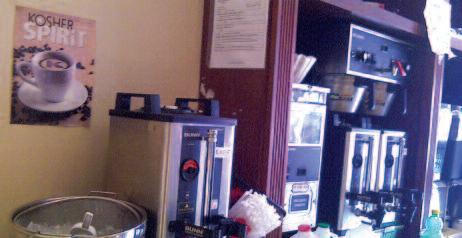
Now you see that ~ certification goes a lot deeper than just supervising the meat and potatoes (and as usual there will be plenty of potatoes) on your plate this Pesach
Wishing you all a kosher and “kosher-friendly” Pesach
Rabbi Chaim Fogelman Editor-in-Chief
FLASHBACK!
Kosher for Passover Salt, certified by Rabbi Berel Levy, ob”m, in the early 1960s.

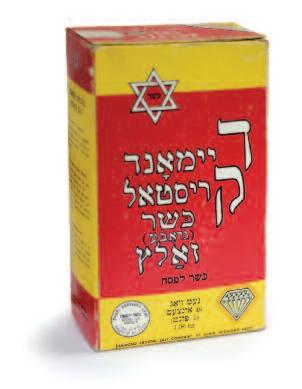
Read more on Rabbi Levy on page 18
Share Your Spirit
Readers share their thoughts about the last issue...
Dear Kosher Spirit,
Ijust read your interview with Rabbi Teller and I would like to add that, indeed, it’s an honor to have a man like Rabbi Teller as part of your staff. He is of the few people who have the perfect combination of rabbinical AND personal qualities.
Rabbi Gershon Padwa
Dear Kosher Spirit, I am very impressed by your highly successful publication and would be very interested in contributing to Kosher Spirit
L.W.


@KosherAlerts
@KosherAlerts
www.KosherSpirit.com • 3
FEEDBACK
@KosherAlerts Check out their tweets – very helpful in keeping track of the #kosher world
Keep up the good work!
Great tweet! Making it easier for me to
#kosher – short & sweet! Follow us: Mentions about the ~ on Twitter: @KosherAlerts Weiss Bakery of Flatbush 1302 Avenue M, Brooklyn, NY (718) 376-0018, ~ Kosher, Cholov Yisroel & Pas Yisroel Now That’s the Spirit! For a complete listing of all ~ Kosher Certified Pesach products please visit: www.OK.org/Pesach
keep
The ~ receives many letters/emails with kosher questions...

Dear ~,
I read the article about challah in the Tishrei edition and found it very informative. I own a small start-up bakery and I often have some leftover dough from previous dough mixes (from which I have already taken challah) and I would like to mix it in to my new batch of dough. Do I have to wait until we take challah from the new dough in order to mix it in, or can I mix it in before I take challah? What should I do if we mistakenly added the dough before taking challah?
Rabbi Chanowitz responds:
You are correct. One should only add the leftover dough after you have taken challah from the new batch of dough.
If you inadvertently mixed in the old dough before taking challah, the concern is that if you take challah from this mixture, the piece of challah dough may have been from the old dough (from which you already took challah). This is problematic since it is “min hapotur al hachiyuv” (using something not obligated to perform the obligation). Therefore, it is best to take challah from a totally new batch of dough for this one “min hamukaf” (from the immediate area). If this is not possible, you can take challah from the dough in question, and rely on the opinion that the two dough mixes blended well together so that the challah dough has some of the new dough which is obligated in challah
The same applies to those bakeries that use live yeast from sour dough of old dough mixes. One should make sure that the yeast comes from dough that has not had challah taken. This is most difficult after Pesach, since the yeast was sold to a non-Jew, and non-Jewish dough does not require that challah is taken. The solution is the same as the above. One should make a new batch of dough without yeast and take challah from it. If this is not possible, then one can take challah from the dough in question. In this case, the size of the challah should be larger than the amount of sour dough used. (See Shulchan Oruch, Yoreh De’ah 324:11 and commentary for details.)
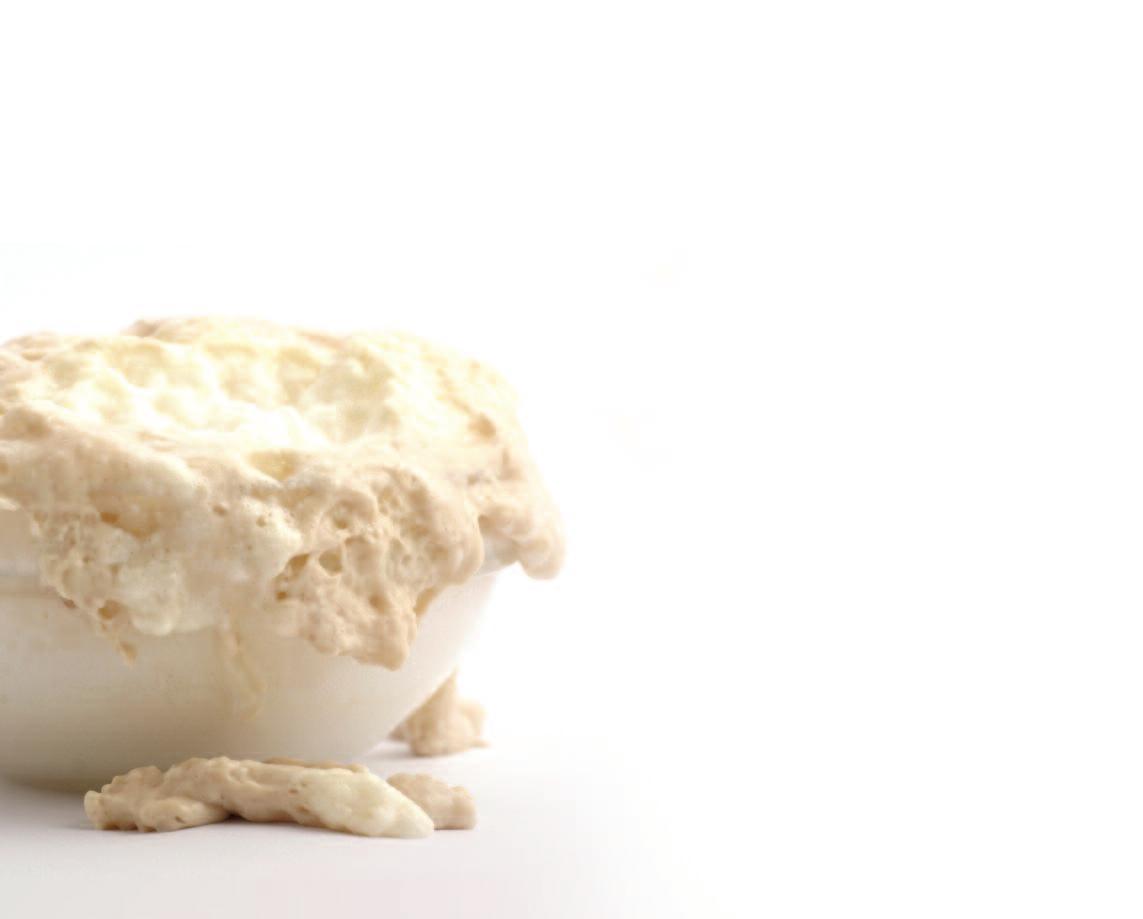
4 • www.OK.org
Potatoes With Benefits
Potatoes play a starring role in our Pesach menu. Discover the myriad of health benefits found in the humble tuber.

Digestion
Potatoes are easy to digest and facilitate digestion. They are a good food for babies and those who cannot digest hard food, but need energy.
Skin Care
Potatoes contain vitamin-C and B-complex and minerals like potassium, magnesium, phosphorus and zinc, which are good for the skin. Apart from that, pulp obtained from crushed raw potatoes, mixed with honey, can serve as excellent skin and face packs. The pulp, if applied externally on burns, gives quick relief and aids healing.
Scurvy
The vitamin-C present in potatoes can help prevent this dreaded deficiency disease, caused due to lack of vitamin-C.
Inflammation

Potatoes are very effective in relieving inflammation, internal or external. Since it is soft, easy digestible and has a lot of vitamin-C, potassium and vitaminB6, among others, it relieves inflammation of intestines and the digestive system. Again, raw smashed potato can be applied to relieve external inflammation, burns etc.
High Blood Pressure
Potatoes can be used to relieve high blood pressure due to tension, from the abundance of vitamin-C and B in them, but should be avoided if high blood pressure is due to diabetes. The fiber present in potatoes is helpful in lowering cholesterol and improves the functioning of insulin in the body, which aids in lowering of blood pressure, since there
is a direct relation between the blood pressure and the glucose level in the blood and insulin regulates the glucose level.

Heart Disease
Apart from the vitamins (B-complex, C), minerals and roughage, potatoes also contain certain substances called carotenoids (lutein, zeaxanthin, etc.), which are beneficial for the heart and other internal organs.
Kidney Stones
Potatoes are very rich in magnesium, which resists accumulation or deposition of calcium (calcification) in the kidney and other tissues, thereby proving beneficial for treatment of kidney stones.
Other Benefits
Juice of potato is a good treatment for burns, bruises, sprains, skin problems, ulcers, cancer of the prostrate and uterus, and the formation of cysts or tumors.
Cautions
Green potatoes are poisonous, and so are potato leaves and fruits, as they contain alkaloids like solanine, chaconine and arsenic whose overdose may prove fatal. Potatoes have a highglycemicindex, which means that the carbohydrates turn to sugar very quickly in the body. Therefore, they should be consumed in moderation.
www.KosherSpirit.com • 5
~~
KEEPING KOSHER IN...
China
By Rebbetzin Dini Freundlich, Chabad Shlucha to Beijing, China
What makes a young woman in today’s day and age agree to move to a place where there is no shul , no school, no mikvah , kashrus is a struggle, and the language spoken and written is totally different from any language she has ever heard or seen? There can only be one answer: A passion and burning desire to experience the greatest privilege a Jew can have—to reach out to other Jews and inspire them to come closer to Hashem through Torah and mitzvos.
I was raised in South Africa as the child of Chabad shluchim. After I got married, my husband Rabbi Shimon Freundlich and I lived in Hong Kong on shlichus for five years. You might think Hong Kong is far away and strange, but luckily I had gone there as a single girl to help the shluchim there.
Grateful for the years of training that living in the Far East and working with active, successful shluchim gave me, we moved to Beijing.
We were well aware of the negatives: China is a communist country. Americans might have a hard time understanding the repressions. The Army is all over, visas are hardly ever given to rabbis (and when they are,

the rabbis are carefully followed and controlled), and our home and phone were almost certainly bugged.
Tight border control: Meat, dairy products and wine are illegal to import, mail is opened and read and appliances are heavily taxed. Not to mention all the other hardships of living in a remote area with little to no organized Jewish life. But still, two weeks before RoshHashanah, we arrived. Ready to get right to work.
Where do we start?
Food is usually a good place. Food speaks all languages. Also, my family does not take too well to the lack thereof. So off to the market I went.
Easier said than done. It was erev RoshHashanah and we needed a fish
head. The fish market is at the back of the meat market which you need to walk through first! Every conceivable animal and its body parts were dangling from the ceiling and walls, and covering the floors. And on a hot summer’s day the smell is definitely not one I’d like to experience again. It is a far cry from calling up the kosher fish store and requesting (in plain English) a delivery.
There is a Chinese joke that says the Chinese will eat everything with four legs except the table, and everything that flies except a plane! At the market I saw this first hand.
Now, how hard could it be to find kosher yeast? Don’t all women who bake bread need yeast? But after three days of searching, it was erev Shabbos and still nothing. Two hours before Shabbos I found some in a small store in one of the hotels. The challah that week left a lot to be desired.
For fruits and vegetables we have to go to the local farmers market. Firstly, they have their own weight measurement which is called “jin”. There are no pounds or kilos so at first I had a hard time figuring out
6 • www.OK.org
(and for Pesach, no less!)
how to communicate how much of something I wanted. And in a country where the average person buys one small bunch of greens and a few small mushrooms, a person wanting anything more than two potatoes is looked upon as strange. So you can imagine the unwanted attention I got when I asked for 25 cucumbers, 10 heads of lettuce, 65 potatoes, 12 onions, and 40 carrots. I’ve become a regular sight at the market with a lot of finger pointing (they refer to me as “fangla”, i.e. meshugana), but I have made some friends as well. After all, I may be fangla but I’m also a good, paying customer!
China is famous for making copies of everything from bags to watches and everything in between. I did not know that this included food. I learned that I could not trust anything. I was in the market and was excited to see American canned corn with a hechsher! To add to my excitement, it was being sold at half the price I usually pay. It was only after I got home that I discovered that the label was a color copy and stuck on with tape. Who knows what was really inside?!
Slowly I learned how to get the food we needed. When people came
to visit from overseas, I learned not to be shy about asking people to bring me things!

Before I knew it, Pesach had arrived. We made Beijing’s first ever model matzah bakery and it was a great success, BoruchHashem. Fifty children came, heard the Pesach story, baked matzah, and learned about the mitzvos. We decided to use the beautiful, elegant hotel nearby for our seder. We rented one of their rooms to prepare in, and much to the hotel staff’s horror, we transformed their hotel room into a full scale kitchen/factory, with lettuce in the bathtub, peeling on the glass coffee table, food processor plugged in next to the alarm clock, and pots on the beds. They were horrified. In contrast, the people at the market could not believe their luck. In one day, they made the money they usually make in two years. Soon they started following me around the market, pointing and chattering and laughing. We had 150 people at our first seder and 70 at the second, so we had the last laugh.
We have recently begun importing shechita in the form of Rabbi Mordechai Abergel, the Chabad shliach from Singapore. He and my husband spent an entire day on it, and shechted 730 chickens. We sent half to Chabad of Shanghai (our fellow shluchim, Rabbi and Mrs. Sholom and Dinie Greenberg). The rest is available here to anyone who wants kosher chicken.
When my father was a young bochur in yeshiva in Montreal it was time for the oldest class to go to New York to see the Lubavitcher Rebbe Shortly after SimchasTorah , they were called into the Rebbe’s room. The Rebbe spoke to them about a Ben Melech (prince) who is sent to merchokim (distant places). The Rebbe told them that their shlichus (mission) was to go back to their respective yeshivos stressing that geographic distance creates a greater closeness to the source.
We are privileged to be a small part of preparing the world to be a fitting dwelling place for Hashem, bringing the Geulah at last.
www.KosherSpirit.com • 7
Originally from a speech by Rebbetzin Dini Freundlich and adapted from the N’Shei Chabad Newsletter, June 2002.
“...After all, I may be fangla (meshugana) but I’m also a good, paying customer!”
THE KOSHER WINE
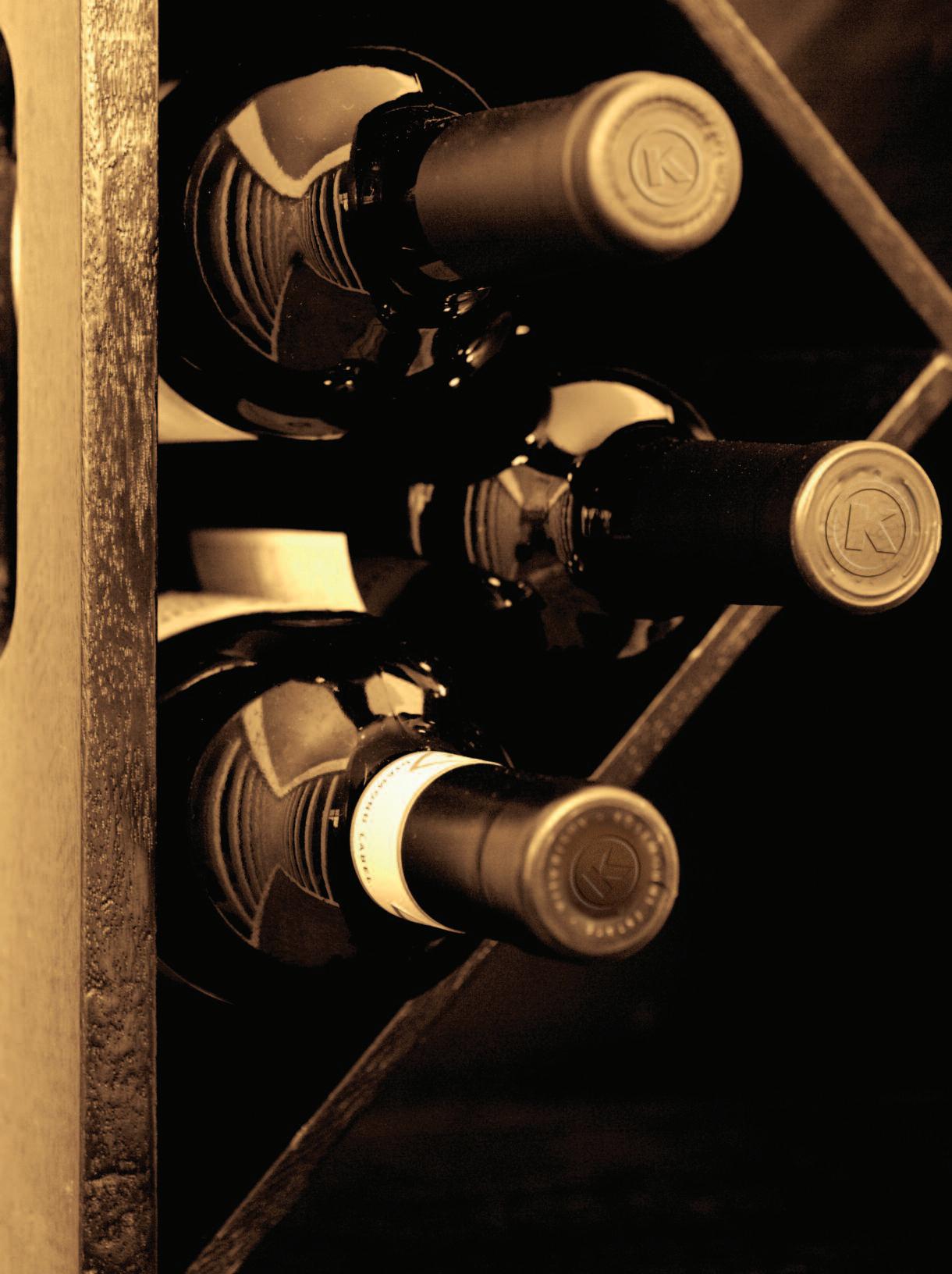

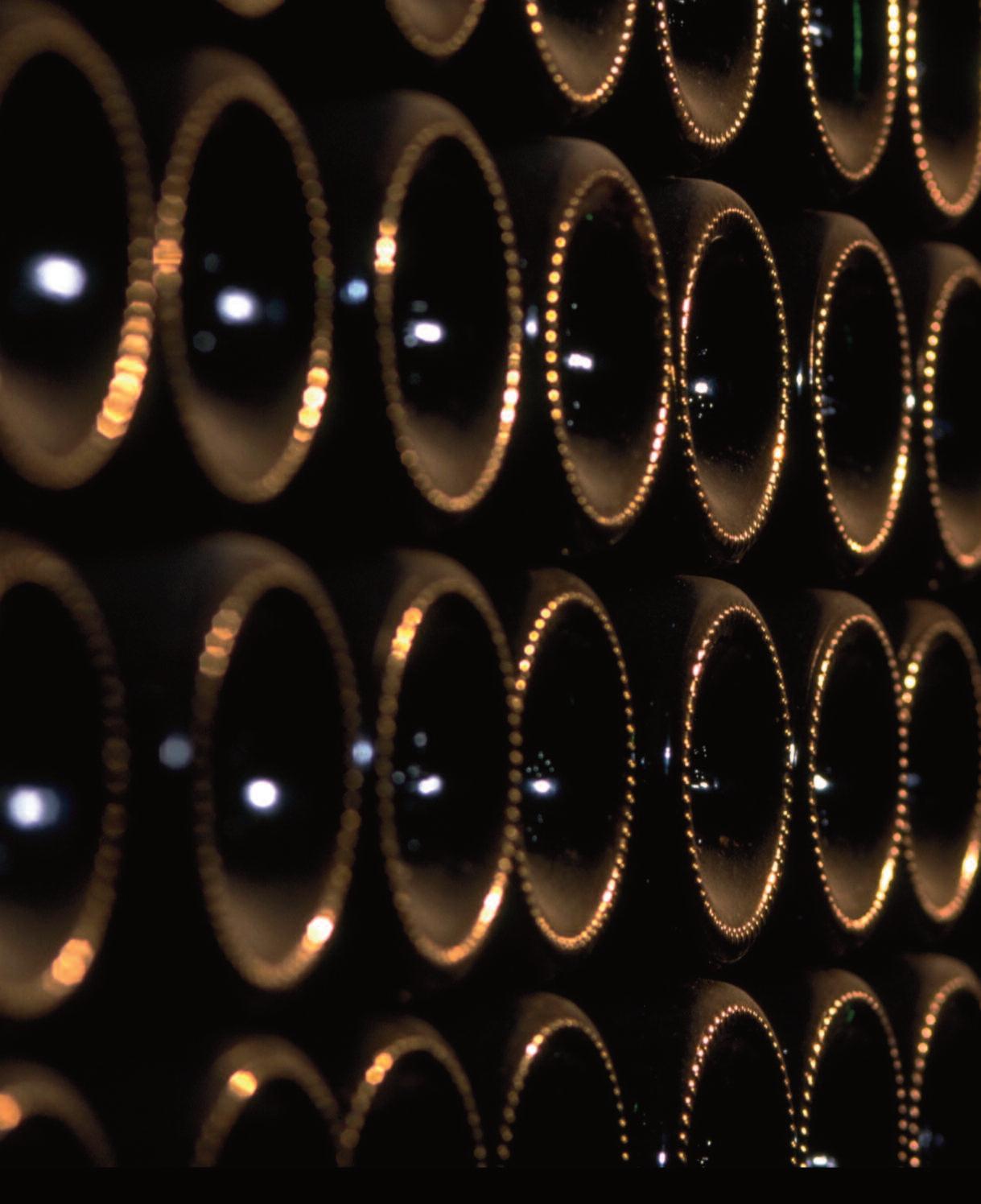 By Rabbi Ahron Haskel
By Rabbi Ahron Haskel
There is a revolution taking place in the Israeli wine industry— a kosher revolution. It is not accompanied by loud crowds and intensive media coverage, nor is it widely known and curiously followed by millions. All the same, this is a revolution felt all over the world. Wherever there are observant Jews, its ramifications are bound to be noticed. Suddenly, shopping for kosher wines has become that much more complicated…how can you decide between such a variety of high-quality, top-notch wines?

8 • www.OK.org
This difficulty is a relatively new development—kosher wine was not always a contender in the wine market. For years, kosher wines had a terrible reputation. They were too sweet and obviously inferior—the kind of wine consumed because, well, one does need something to make Kiddush on…but those were hardly the wines to gladden the heart of man.
Why was kosher wine always so inferior? There were a few reasons. Firstly, wineries didn’t really feel the need to cater to kosher costumers, especially as that would take the control of the wine making—something very dear to most wine maker’s hearts—out of their hands. Secondly, it was common knowledge that
vised and approved by the ~, and this is only the beginning.
Despite the demanding nature of kosher wine certification, we see more and more prestigious boutique wineries applying to be kosher and putting up with all the kashrus requirements.
Rabbi Yitzhak Rosenfeld, head kosher supervisor at multiple wineries, explains: “Once a non-kosher winery has reached 20,000 or 30,000 bottles a year, it just doesn’t have any way to go further. More bottles would mean starting to sell to supermarkets instead of only to hotels and restaurants. And, in order to get into the supermarkets, they need to have a kosher certification. And so they apply to us.”
role in the production. Despite the emotional difficulties, most wineries ultimately choose the lucrative route —handing the winery keys over to the mashgiach. But it’s not easy for them to reach this point. “Take Flam winery, for example’” says Rabbi Eidelman, another supervisor. “Its owner, Yisrael Flam, is one of the main wine experts in Israel. He established his winery as a family business where he worked with his wife and sons. They were doing extremely well—their wines were the most sought after by Israeli restaurants. However, he wanted more than that. He knew he was making very special wines and he wanted the entire Jewish population to have access to them. So he thought about getting kosher certified. But surrendering the winery keys! He had been in contact with us for five years before he could take this step. It took that much time for him to reconcile himself to the idea that he couldn’t be intimately involved in the wine making process anymore.
many ingredients used in the wine industry, from tartaric acid to melolactic bacteria, were simply unavailable in kosher forms.1 Accordingly, there was little interest in producing quality kosher wines.
The difficulty of finding kosher ingredients is now a problem of the past, and the ~ played a major role in that change. Rabbis at the ~ worked tirelessly for years to make all the necessary ingredients kosher and eliminate this obstacle.
This, however, was only one part of the journey. Working in Israel, we had to cope with a tricky situation where supervision at the wineries is required from the very beginning— the planting of the grapes. Wineries certified by the ~ can only use grapes from vineyard plots super-
Even after the vintners are assured that their wine quality is not going to suffer because of the kashrus, the process isn’t easy for them. “What kind of person starts a boutique winery?” asks Rabbi Rosenfeld. “Well, here in Israel those people are usually wine-lovers. They have high-flying careers and earn hundreds of thousands shekels a month – but their real love is wine. The winery becomes like a club, where they work with their close friends. Giving up the direct contact with the wine making is very, very hard for them.”
Handing the keys over
Due to the special nature of wine, there are unique circumstances that require a frum Jew to perform each task involved in the kosher winemaking process. For many winery owners, this means they have to step aside and relinquish their physical
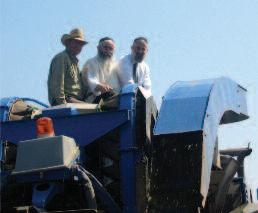
“We gave him all the professional and psychological support, without giving up any of our standards. We wouldn’t agree, for instance, to certify only a part of the winery. Some kosher agencies do that, but we never agree to such an arrangement. We think it can cause great confusion among kosher consumers.”

“So, Flam winery became kosher and the family couldn’t work there anymore—but they sort of adopted me into the family. They saw how we cherished their interests, how we worked to solve all the technical problems, to obtain all the necessary kosher ingredients…and they are definitely not sorry about the decision. Only a few weeks ago, we held the first terumos u’maasros (tithing) ceremony ever at the Flam winery— one of the most emotional ones I’ve ever attended.”
The Saslove winery has a similar story. Rabbi Perlov, the company rabbi, relates: “The winery belongs


www.KosherSpirit.com • 9
1. See Rabbi Haskel’s article on kosher wine in Kosher Spirit Spring 2008.
to a vintner from Canada, for whom each harvest was a family occasion. The whole family came from abroad to help. For the longest time he just couldn’t give up this experience.”
As with Flam winery, it took him five years to make his decision. And, despite the loss of the family harvest, he never looked back.
thodox Jews aren’t spoiling their wine…but they relax pretty quickly. The truth is, our mashgichim are so skilled and professional, we sometime even add to the winemakers’ knowledge, teaching them new and faster ways to do things…they come to trust us completely—and that’s when they become fully at peace
newcomers that he once borrowed Rabbi Haskel’s yarmulke and posed proudly as ‘the new winery mashgiach’.
“The mashgiach is my mouth and my nose”
And what do the vintners themselves say? Their satisfaction is evident. Eli Ben Zaken, the manager of Castle Winery relates: “I had great success with my wines, but I just couldn’t avoid the thought that it wasn’t enough. The whole world might love my wines…but I want all the Jews to be able to enjoy them. That was when I decided to get a kosher certification.”
Rabbi Rosenfeld also agrees that the vintners’ attitudes change pretty quickly. “In the beginning, it’s something of a shock for them. Yes, they have already heard from their friends that they won’t be able to work with the wine – but they usually don’t realize how far it will go. They find themselves transforming from wine makers to winery CEOs…not involved at all in the production. Some start out by following us everywhere, watching our every movement to make sure we know what we are doing, making sure those or-
with the major step they took in becoming kosher.”
Sometimes, the cooperation with the wineries poses special challenges. Such was the case with Tulip winery, which is located near a home for people with special needs. The residents used to work in the winery and were nearly heartbroken at the idea of not being able to participate in the winery work anymore. “We had to make an effort to think of things they could do—like taking out the waste, etc.” says Rabbi Perlov. One of the residents was so impressed by the
Interestingly enough, he says, even Jews who don’t keep kosher, expect Israeli wines to be kosher. Indeed, 90% of the kosher wines are purchased by costumers who don’t usually keep kosher. “We found out that when a Jew in the Diaspora buys an Israeli wine, he wants to feel the connection to Israel—and the kosher certification is one of things symbolizing this connection for him. If he sees a non-kosher wine, he would rather buy a well-known French brand.”
Yisrael Flam is another vintner who sees only the positive side of
Interview with Michel Rolland
Michel Rolland is a famedBordeaux-basedwine expert and vintner, with hundreds of clients across 13 countries and influencing wine style around the world.

in the Americas. The Bulgarian climate and soil lends itself to a very elegant wine.
KS: How was your working relationship with the rabbis during wine production?


KS: Recently, you made wine in Bulgaria under ~ supervision. Tell me about the wine you made under the “Ruba Costra” label.
MR: We have one of the
best winery infrastructures in the business, so we are able to produce a classical wine variety like other high-end winemakers. Under the “Ruba Costra” label, we produced Cabernet Sauvignon, Merlot, and
Rubin (a Bulgarian grape). We specifically chose to make a wine native to Bulgaria to showcase the wine personality of Bulgaria. It is a soft, elegant wine that is not too powerful and not as strong as wines produced
MR: We had a very good working relationship with no problems. It is quite unusual to have someone watching the wine tanks day and night. Sometimes we went two days without any work on the wines, but the rabbis were still there! In Bordeaux, the winemak-

10 • www.OK.org
getting certification. “The mashgichim and their workers do a great job carrying out all our instructions. Our main mashgiach has become a true wine expert. In addition to everything else, I have gained a lot personally—I now have much more free time to try experiments I couldn’t find time for before.”
In Tzora, Eran the vintner, has great confidence in the mashgiach’s abilities: “Avi, the mashgiach I have here, has become my mouth and my nose. I have complete trust in him.”
Rabbi Haskel isn’t surprised by the vintners’ responses. “We always tell vintners who find the change especially intimidating: let’s try it for one year. If after one harvest you feel you can’t go on—we will go our separate ways.”
So far, he reports, no winery ever choose to give up the certification. “All of the 26 wineries we certify in Israel have never considered it, despite how difficult they initially

found our requirements.”
And indeed, despite being torn away from their favorite work, vintners first and foremost want people to enjoy their wines, and the certification has proved itself a sure way to increase sales—without harming the quality of the wine in the least. Daniel Rogov, a well-known Israeli wine critic, has recently declared that getting kosher certification doesn’t change anything in the quality of the wine, and the multitudes of happy customers seem to agree.
“There was once a nasty rumor that mevushal wine is inferior to regular wine,” says Rabbi Rosenfeld. “To prove it isn’t true I gathered a few vintners and wine experts and let them taste a few wines – some mevushal and some not. They couldn’t tell the difference between the two kinds.”
So the revolution is continuing, and its greatest advancers are the very people who watched it warily
for a long time before taking the leap. The vintners forced to relinquish the direct touch with their wines are the most enthusiastic advocates for kosher certification. “Take Yoav Levi from BazeletHagolan Winery,” says Rabbi Perlov. “He used to be a staunch atheist before he started working with us. Now he tells everybody that there is a special blessing in kosher wine: every year by bottling time, all the wine has already been pre-sold! Not only does he urge all doubting wineries to get certified, but he told us more than once: “Now that I don’t work on Shabbat I have more time for my family. And my boy took advantage of that to persuade me to take him to shul… the first time I was there for a very long time!”
A special blessing indeed.
ing was more complicated because we were doing larger quantities and different types of wine, so we needed more supervision. In Bulgaria, we worked to make the production easier on everyone involved.
KS: The “Ruba Costra” wine was made in September. How did you work around the Jewish holidays?
MR: The schedule presented a bit of a problem. Often we left on Friday and couldn’t come back to check the wines until Mon-
day. In classical winemaking, the wine is tasted and checked every day, so we had to skip a few days due to the holidays.
KS: Are kosher requirements an obstacle to producing top quality wine?
MR: Not at all. Kosher wine can definitely be produced as top quality wine. The quality comes from the grapes themselves. Since we can choose the picking date, there is no reason why kosher wine can’t be made at a very high quality level.
KS: So, one of the main secrets is when you pick the grapes?
MR: Yes. After the grapes are picked, there is no difference in wine production from non-kosher wine, aside from the rabbinic supervision. The quality of my kosher wine is quite special. Very often I taste regular wine and they are very close in quality (kosher and mainstream high quality wines). Kosher wine CAN be very high quality if winemakers try to make good wine.
KS: Do you have a closing statement about kosher wine production or the kosher wine market?
MR: I think that kosher wine is very interesting for the Jewish community. Today, kosher observant people can drink very good wine. If they want good wine, and believe in good quality, there are definitely kosher wines to choose from. There is no reason to look to non-kosher wine, because high-quality kosher wines are widely available.
www.KosherSpirit.com • 11
1O+ is the most common blood type (39% of population) and AB- is the most rare (1% of population).
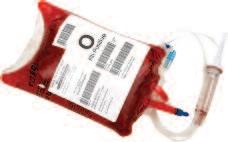
Blood makes up 7% of a person’s body weight.
Makkos
3 There are between 6 and 12 million cases of head lice each year.
Lice are the secondmost common condition among children—second only to the common cold.

2The Goliath Frog is the world’s biggest frog. It can grow up to 3 feet long and weigh about 7 pounds!

The world’s smallest frog is Microhyla Nepenthicola. It is only 9-11 millimeters long (about the size of a pea).
The wildebeest migration in Serengeti (Africa) is considered the largest and longest land migration in the world. Nearly two million animals move in the massive herd.

4
5 The greatest number of human plague infections occurs in Africa, but the largest concentration of infected animals is in the United States—particularly in New Mexico, Arizona and Colorado—and in the former Soviet Union.

7
The largest hailstone in the world fell in Vivian, South Dakota on July 23, 2010. It measured 18.5 inches around, weighed 1.9375 pounds, and made a dent in the earth as large and as deep as a coffee can.

6 Recent CAT scans on the 3,300-year-old mummies of Pharaoh Thutmose II, his wife, Hatshepsut, and his son, Thutmose III, show scars covering their bodies, consistent with the disease of boils. Researchers hail this as scientific evidence of the plagues that Hashem brought upon the Egyptian people.
8
In 1915, a plague of locusts struck Eretz Yisroel and the surrounding areas. The plague lasted from March to October and destroyed almost all vegetation. As a result, food prices soared and a bag of flour cost $15 (the equivalent of $320.72 in 2010).

9
Alert, Nunavut, the northernmost settlement in Canada and the world, experiences Nautical Polar Night from late November to mid January. This means that no trace of light can be seen anywhere during the day or night.

10 According to Mechilta, ParshasBo, there were many “firstborn” children in each family, because the Egyptian women were immoral. Therefore, multiple children in each “family” died during this plague.

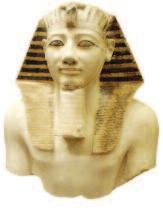
12 • www.OK.org
Frogs עדרפצ Lice םינכ Wild Beasts בורע Blood םד Pestilence רבד Hail דרב
Locusts הברא Darkness ךשח Death of the Firstborn תורוכב תכמ
Boils ןיחש
Superb Schlissel* (Key) Challah
3 tbsp. salt

5 lb. high gluten flour
6 egg yolks
1 c. oil
1 7/8 c. sugar (2 7oz. cups)
4 packets (3 tbsp.) dry yeast
4 c. lukewarm water
1 extra cup lukewarm water
1. In mixer, add salt, 2.5 pounds of flour, eggs and oil.
2. In a separate bowl, combine sugar, yeast and 4 cups of lukewarm water. Let yeast “proof” (watch for bubbles to form).
3. Add yeast mixture to mixer and mix until a wet paste forms.
4. Add the rest of the bag of flour and mix for 10 minutes. If the dough is too dry, add some water from the extra cup of lukewarm water.
5. Let dough rest for 15 minutes, then mix 1 more minute.
6. Remove dough from mixer, rub with 1 tbsp. oil and put in
a new plastic bag. (Small trash bags work well.) Close bag loosely and put in refrigerator to rise for about 2-3 hours.
7. Remove dough from refrigerator and punch it down.
8. Remove an egg-size portion of dough and make the brocha L’hafrish Challah 1
9. Separate dough into 6 equal portions. Shape each of the six loaves and allow them to rise for 1 hour.
10. Glaze challah with a beaten egg and bake at 350 for 3035 minutes. If using foil loaf pans, bake for approximately 40-45 minutes.
* It is a custom to bake challah with a key to your house hidden inside (or challah shaped like a key) for the Shabbos following Pesach. This custom is a segulah for parnossah (livelihood) for the coming year.

AfterPesach Recipe
1. For more information on taking challah(Hafrashas Challah), see Kosher Spirit Tishrei 5771. 13
The Laws of Kosher

 By Rabbi Yitzchak Gornish
By Rabbi Yitzchak Gornish
In a rather poignant section of the Haggadah, we read about Rabbi Elazar ben Azarya (who is well-known by most for his premature aging1) and his struggle to find a source requiring one to recite the third paragraph of Shema in the evening. While he refers to it as the “chapter of the Egyptian Exodus,” it primarily deals with the laws of tzitzis, and only culminates with our deliverance from Egyptian bondage. It is therefore appropriate to review some of the basic laws of tzitzis during the Pesach season, as tzitzis appear to be intrinsically related to our Exodus from Egypt.
14 • www.OK.org
In addition, Pesach cleaning and spring cleaning often go hand in hand and many use this time sort out old clothing from closets and drawers. What do you do with that pair of outgrown tzitzis? Or the pair that is so worn out it is torn? Or the pairs with missing or broken strings? Let’s discuss “kosher” tzitzis
Although the Torah only requires one to place tzitzis on a four-cornered garment that one intends to wear,2 there is a Rabbinic commandment to purposely wear such a garment, with tzitzis, all day and especially during prayer.3
The original commandment required that each corner of the garment had strings4 that were dyed blue (techeles)5 from the blood of a chilazon (a sea creature that surfaces once every seventy years),6 but as most authorities feel that we can no longer identify this sea creature, it suffices to do without the blue strings. The blue is symbolic of the sea, which mimics the heavens and reminds us of the One Above.7 There are those who believe they have rediscovered the chilazon and they currently dye their tzitzis strings blue with its blood.
What Garments Require Tzitzis?
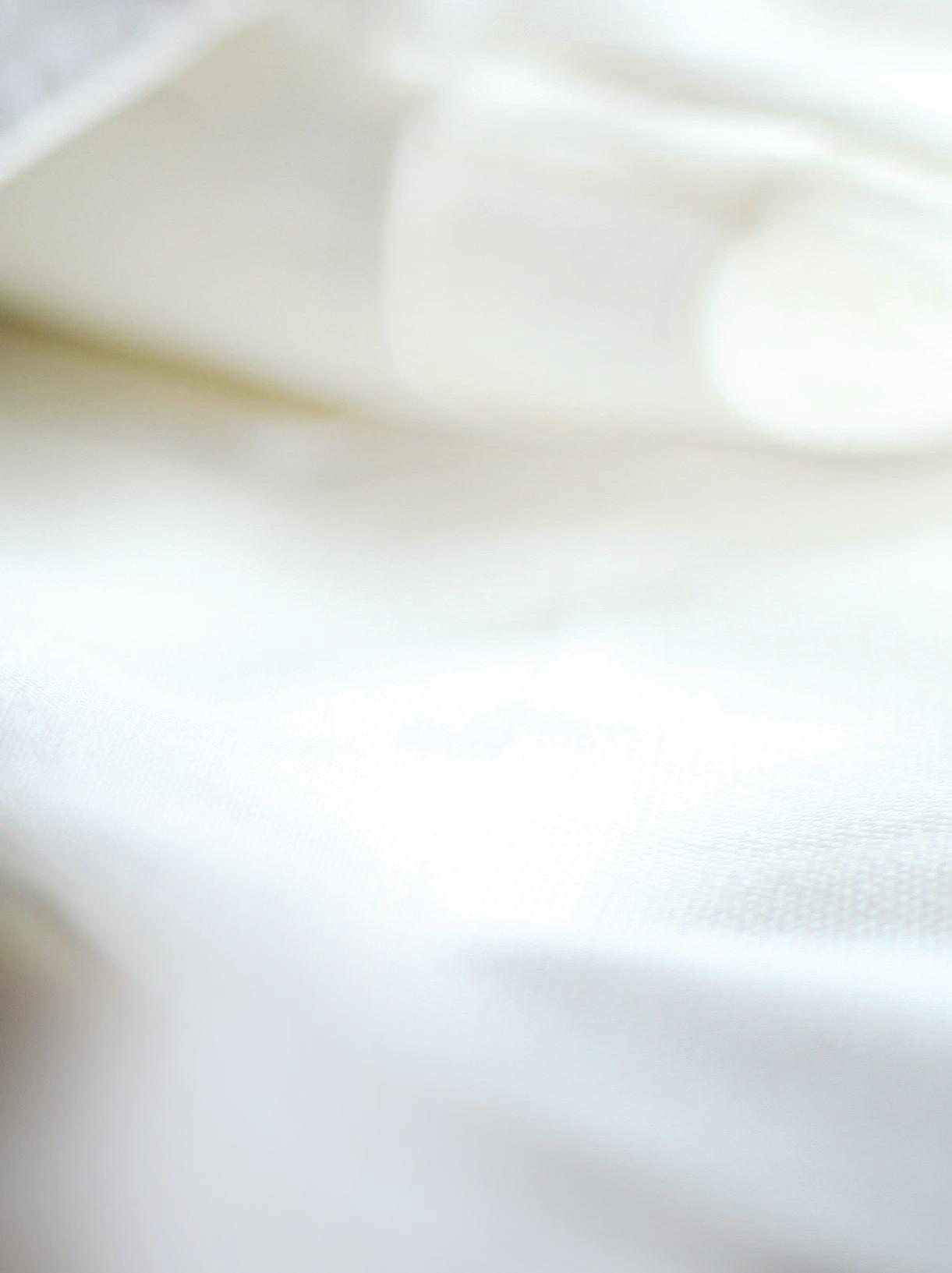
The mitzvah of tzitzis consists of placing strings through the corners of a four-cornered garment. If a garment has five corners, the tzitzis are placed through the four furthest corners.8
According to most authorities, the Biblical requirement of tzitzis applies only to garments made of linen or sheep’s wool9; because those were the only clothing materials discussed in the Torah. However, the Chachamim require tzitzis for all other materials, except leather10 (synthetic materials, like polyester mesh, also do not require tzitzis because they are categorized like leather11). Even so, it is proper to seek out a wool garment so as to fulfill the mitzvah according
to the Torah ruling.12 While the strings must be made of the same material as the garment in order to fulfill the requirement, strings of wool or linen can satisfy the law in garments made of other materials. 13 However, one should not seek to utilize linen tzitzis at all.14
While there is a dispute if the mitzvah of tzitzis is a requirement on the person or on the garment, we follow the view that only garments intended for wear need tzitzis. The garment itself does not have its own requirement.15 Likewise, only garments utilized during the day need tzitzis. 16 One must also own the garment in order to require tzitzis on it. However, if one borrows the garment for more than 30 days, the garment requires tzitzis. 17
There is a dispute if the transgression of shatnez (mixing wool with linen) applies to tzitzis, with many feeling that one can wear linen tzitzis on a wool garment and vice versa. However, in practice, we do not follow those opinions. The common opinion is that linen tzitzis can only be mixed with wool tzitzis for the purpose of techeles (a wool string dyed blue), but since we do not have techeles today, they should not be mixed.18
The size of a garment that requires tzitzis is that which can cover most of a child that can walk in public unassisted (according to the Tur, approximately nine years old).19 This comes out to a cubit (20-24 inches by 20-24 inches) in front and the same in back.20
Blankets and other night wraps do not need tzitzis. In addition, clothing meant to wrap around the head (like a shawl) does not need tzitzis. 21 Kapotes (sirtuks/frock coats) that have the front and back corners parallel to each other may require tzitzis. The solution is to round one of the corners.22 (Simply sewing up one corner is not sufficient, since all stitches eventually come undone.23) There is
a dispute if designated nightclothes need tzitzis when worn during the day, and if designated day clothing needs tzitzis when worn at night. While nightclothes need tzitzis if worn during the day, one should accept the stringencies of both views.
The stripes on the tallis and tallis koton symbolize the techeles that is no longer utilized, and on a Kabbalistic level, because white represents Hashem’s chesed (kindness), while black represents Hashem’s gevurah (strength).24 We therefore demonstrate that we implore Hashem’s kindness to overwhelm His strength. Sefardim do not wear talleisim with stripes since they follow the view that tzitzis need to be the color of the garment and today tzitzis are white.25
Most talleisim (used for davening) contain a strip of cloth (often silk) attached to the head area and many even wear woven silver on their Shabbostallis (the AriZal was not insistent on this).26 The AriZal did, however, require one to wear tzitzis while sleeping as protection.27 This is the custom of many Chassidim
Although the ShulchanOruch requires one to wear the tzitzis garment over one’s clothing (easier to be inspired by them), many follow the view that only the strings need to be exposed. 28 If one is uncomfortable in his surroundings, he may tuck the tzitzis in.29
Regarding those tzitzis that double as an undershirt, several issues arise. Firstly, it is improper to wear the garment that one uses for the mitzvah of tzitzis directly on the body – it shows a lack of respect.30 Further, to require tzitzis, most of the side area must be ventilated, not including the area required for the arms to fit through. The shoulder areas together must also be wider than the neck cutout. The mostly closed sides on this type of tzitzis may make the garment as though it were partially closed up, which at the very least, negates the need for a brocha. Since one only
www.KosherSpirit.com • 15
wears tzitzis for the sake of the mitzvah, it may be forbidden to wear such tzitzis outside of an eruv on Shabbos because the actual strings would not be considered a necessary part of the garment, but rather a “burden”.31 Furthermore, some authorities hold that to require tzitzis, the sides must be completely open, without any snaps.32 It is best, therefore, to perform the mitzvah with a traditional pair of tzitzis
The Tzitzis (Strings)
The hole to place the tzitzis through may not be more than three thumb breadths (approximately 2.25 inches) from the bottom of the garment33 and not less than the length from the first thumb joint to the tip (approximately 1.375 inches)34, so if the garment tears in the corner area, the tzitzis will still be attached.35 If the hole is outside of these parameters, it is not considered in the corner of the garment. These measurements

are done vertically, not from an angle.36
One is allowed to repair the hole for the tzitzis to pass through if it is damaged,37 as long as the tzitzis are still well connected. It is recommended that the holes and rim of the garment are reinforced, because of the potential for tearing.38 Reinforcement is especially necessary for those that place the tzitzis through two holes near each other, since they are more likely to tear. (This practice of two holes is only utilized in a tallis koton.)39
The strings must be spun for the sake of the mitzvah. Some rabbis even rule that the wool combing must be done for the sake of the mitzvah 40 Before spinning the wool, one should say aloud, “This wool is being spun for tzitzis.” If a non-Jew spins the tzitzis there is a conflict of opinions on whether the tzitzis are kosher. According to the Shulchan Oruch HaRav, such tzitzis are not kosher.41 The
7+8=15 (the numerical value of the first part of the Divine name); 15+11=26 (the numerical value of the entire Divine name); and, 13 is the numerical value of Echad (one), signifying that Hashem is one.44
One should use strings that are of average width and are of nice quality to perform the mitzvah 45 While it is certainly permitted to utilize strings that were spun by Jewish women for the sake of tzitzis, a man should tie the actual knots.46 If one puts the strings on the garment without having the intention that it is for the mitzvah of tzitzis, if there are no other strings available it suffices, but a brocha cannot be made on such a garment.47 One cannot attach tzitzis and then create the garment since this would result in Taasev’lo mein hassoi (not following the prescribed sequence); tzitzis must be placed on a garment that already requires tzitzis 48
“...One who wears tzitzis will be reminded of all 613 commandments, since the gematria of the word tzitzis equals 600, plus the eight strings and five knots which total 613...”
length of the eight strings must be at least 12 ordinary thumb breadths (approximately 9 inches) after the coils and knots are made.42 One of the strings must be longer than the others so as to create the revolutions. The area where one ties the knots and revolutions should be approximately a third of the total string length after being doubled over.43 We follow the custom that the first set of revolutions is wrapped seven times, the second set wrapped eight times, the third set wrapped eleven times and the fourth set wrapped thirteen times. This is because
The five knots of the tzitzis represent the five chumashim and the four corners signify that one should always remember the Torah in every direction that he goes.49 (This is like a person who ties a string around his finger as a reminder to do something important.) In fact, if one recites Shema without tzitzis, it is as though he is proclaiming a falsehood since he is mentioning the commandment of tzitzis therein.50 The mitzvah of tzitzis protects us from the temptations of our evil inclination51 and passing the tzitzis over our eyes during Shema protects from blindness.52 Holding the two front tzitzis during Baruch She’amar puts a total of 10 knots and 16 strings in our hands, the numerical value of the Divine Name. One who is careful with the laws of tzitzis will be worthy to experience the Shechina, while one who is neglectful of these laws will suffer a harsh penalty.53 The Torah states that one who wears tzitzis will be reminded of all 613 commandments,54 since the gematria of the word tzitzis equals
16 • www.OK.org
600, plus the eight strings and five knots which total 613.55
Repairing Tzitzis
As long as the garment remains more than half complete, once can sew up a tear.56 However, if a shoulder area tears through, then the garment can no longer be used, unless the tzitzis are removed and reattached. If the strings tear, it depends if when one made the knots and coils one kept track that the same four ends always remained on each side. In storebought tzitzis, one cannot assume that this is the case. When a string tears anywhere above the final knot, the tzitzis become not kosher.57 Since an entire torn string makes the tzitzispossul, if one string tears below the knots, then the tzitzis are still kosher (because the actual string is still long enough). If two strings are torn after the knots, we suspect that this was both ends of one string unless one kept track as to which sides of the knots the strings originated and knows that the two torn strings are from different original strings. As long as each of the torn strings has a “bow’s worth” (approx. 1.575”) remaining, it is sufficient.58 However, if three strings are torn, even if a “bow’s

1. Gemara Berachos 12b.
2. Bamidbar 15:37-41.
3. Shulchan Oruch, Orach Chaim 24:1.
4. According to Rambam, Hilchos Tzitzis 1:1, 1 string per corner is dyed; according to ShulchanOruchHaRav 11:1, 2 strings per corner.
5. Bamidbar 15:38.
6. Gemara Menachos 44a.
7. Gemara Menachos 43b.
8. ShulchanOruchHaRav, Orach Chaim 10:3.
9. Rama, Shulchan Oruch, Orach Chaim 9:1; Rambam, Mishneh Torah, Hilchos Tzitzis 3:1-2.
10. ShulchanOruch, Orach Chaim 10:4.
11. Igros Moshe, Orach Chaim 2:1.
12. ShulchanOruch, Orach Chaim 9:6; ShulchanOruch HaRav 9:4.
13. Shulchan Oruch HaRav,
worth” remains, the tzitzis will no longer be kosher.59 While a garment that is no longer kosher should be disposed of in a respectful manner (wrapped up), the strings themselves are treated as shaimos60 and should not be cut off with a knife or scissors, but rather with one’s teeth.61
Who wears Tzitzis
Women are not required to wear tzitzis and, in fact, are discouraged from doing so.62
Boys traditionally start to wear tzitzis at age three (if toilet trained), but should wear the proper shiur when they turn nine. According to the Rambam, it is a Rabbinic obligation for every child who knows how to dress himself to wear tzitzis in order to educate him in Torah and mitzvos 63
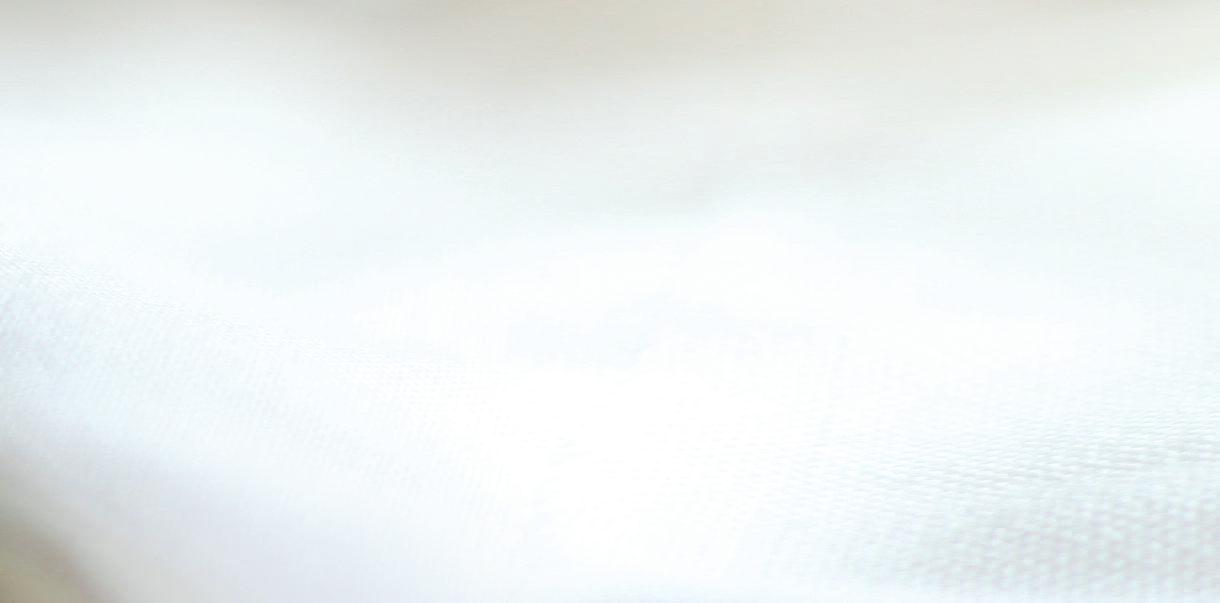
As mentioned, Rabbi Elazar ben Azarya was relieved when ben Zoma explained a posuk to refer to the commandment to recite the third section of Shema at night. However, the Sages insist that it refers to our future requirement to recite the Shema even after the coming of Moshiach. In the merit of our observance of the mitzvah of tzitzis, which in turn represents all mitzvos, may we merit to bring Moshiach speedily in our days.
7 8 11 13
Best corner zone
3x3 thumb breadths (approx. 2.25”)
1st thumb joint (approx. 1.375”)
Final Knot
Kosher even if undone (Do not tighten or retie on Shabbos.)
1 string torn:
Above final knot— Possul
Below final knot— still Kosher
2 strings torn:*
If over a ‘bow’s legnth’ (1.575”) remains on both—Kosher
If not— Possul
3 strings torn: Possul
* Must be sure it’s not the same string.
Orach Chaim 9:1.
14. Shulchan Oruch, Orach Chaim 9:6.
15. Gemara Menachos 41a.
16. Shulchan Oruch, Orach Chaim 18:1.
17. Shulchan Oruch, Orach Chaim 14:3.
18. ShulchanOruch, Orach Chaim 9:4.
19. Tur, Shulchan Oruch, Orach Chaim 16:1.
20. Mishna Berurah, Orach Chaim 16:4.
21. ShulchanOruchHaRav, Orach Chaim 10:20.
22. Mishnah Berurah, Orach Chaim 10:12.
23. Gemara Menachos 37b.
24. Zohar, Vol. 3, p. 227a.
25. Mishnah Berurah , Orach Chaim 16; Shulchan Oruch, Orach Chaim 9:5.
26. Magen Avraham, Orach Chaim 8:6.
27. MishnahBerurah, Orach
Chaim 21:15.
28. Shulchan Oruch, Orach Chaim 8:11; Shulchan Oruch HaRav 8:18.
29. Mishnah Berurah, Orach Chaim 8:26; Shulchan Oruch HaRav 8:19.
30. Rav Chayim Yosef David Azulai on Zohar I, 205a; Rav Uri of Strelisk, Minhagei HaAriZal, sec. 24.
31. Shulchan Oruch HaRav, Orach Chaim 10:16.
32. The AlterRebbe’s Siddur, Laws of Tzitzis
33. Shulchan Oruch HaRav, Orach Chaim 11:14.
34. Shulchan Oruch HaRav, Orach Chaim 11:16.
35. Shulchan Oruch, Orach Chaim 11:10.
36. Rama, Shulchan Oruch, Orach Chaim 11:9.
37. Shulchan Oruch, Orach Chaim 16:5.
38. Rama, Shulchan Oruch, Orach Chaim 11:10.
39. Shulchan Oruch HaRav, Orach Chaim 11:35.
40. Shulchan Oruch HaRav, Orach Chaim 11:3.
41. Shulchan Oruch HaRav, Orach Chaim 11:4.
42. Shulchan Oruch HaRav, Orach Chaim 11:7.
43. Rama, Shulchan Oruch, Orach Chaim 11:14.
44. Mishnah Berurah, Orach Chaim 11:70.
45. Shulchan Oruch, Orach Chaim 11:5.
46. Rama, Shulchan Oruch, Orach Chaim 14:1.
47. Shulchan Oruch, Orach Chaim 14:2.
48. Shulchan Oruch, Orach Chaim 15:2.
49. Shulchan Oruch, Orach Chaim 24:1.
50. Shulchan Oruch HaRav, Orach Chaim 8:1.
51. Mishnah Berurah, Orach Chaim 24:5.
52. Mishnah Berurah, Orach Chaim24:7.
53. GemaraMenachos 43b; Shulchan Oruch, Orach Chaim 24:6.
54. GemaraMenachot 43b and Rashi ibid.
55. Rashi on Bamidbar 15:39.
56. Shulchan Oruch, Orach Chaim 15:3.
57. Mishnah Berurah, Orach Chaim 12:4.
58. Shulchan Oruch HaRav, Orach Chaim 12:1.
59. Rama, Shulchan Oruch, Orach Chaim 12:1.
60. Rama, ShulchanOruch, OrachChaim 21:1.
61. Shulchan Oruch HaRav, Orach Chaim 11:24.
62. Shulchan Oruch, Orach Chaim 17:2.
63. Rambam, Mishneh Torah, Hilchos Tzitzis 3:9; Rama, ShulchanOruch, Orach Chaim 17:3.
www.KosherSpirit.com • 17
✃
Rabbi Berel Levy, ob”m A PIONEER IN KASHRUS
By
Rabbi Berel Levy, ob”m, was the RavHaMachshir of ~ Kosher Certification (then known as Organized Kashrus Laboratories) for over twenty years. He singlehandedly raised the ~ from a small kosher certification agency to a global agency impacting and shaping kashrus worldwide. Rabbi Berel Levy passed away on 5 Nissan, 1987. His son, Rabbi Don Yoel Levy, took the helm of the ~ and expanded upon his father’s vision and legacy, bringing the ~ into the 21st century as the leader in kosher supervision and technology.

18 • www.OK.org
Rabbi Don Yoel Levy
Every year, as my father’s yarzheit approaches, I contemplate how he would act if he were alive today. One character trait that always comes to mind is my father’s firm stand concerning his principles – no matter what challenge he was faced with, my father never compromised on his principles.
In Chassidus, there is a concept called P’sichas HaTzinor, the opening of the pipe. This means that the mitzvos that should be difficult for us to observe are now done with ease due to a person’s pioneering efforts, which have given us the merit and capability to perform those mitzvos
When I was a young boy, my father certified only a handful of companies. One of his biggest companies was a chocolate company, which was basically the mainstay of the kosher certification at the time. The company used a kosher gelatin, made from kosher slaughtered animals. At some point, the gelatin ran out and was no longer available. The chocolate company came to my father and told them they were going to use a gelatin with dubious certification. My father refused to allow it and the company insisted on using the gelatin, so my father made the decision to drop the certification, even though it meant that the certification agency would suffer. There was no policy of “keeping the certification at all costs”.
Around the same time, we had the zechus to go to the Lubavitcher Rebbe ztz”l for a family yechidus. Among the topics discussed during the yechidus, my father told the Rebbe about his decision to drop the certification. The Rebbe told him that it was not so simple, that he also had to notify the public. My father answered that he would advertise that the company was no longer certified,
but the Rebbe said that was not sufficient and told him to request a list of customers from the company and notify them directly. Since people were relying on my father’s certification, it was his responsibility to notify them that the company was no longer certified.
When we left the yechidus, my father said he was somewhat surprised
to go downstairs and put it in the car. The man stood up, took the gun and put it in his car before returning to speak with my father.
My father was once presented with a chicken shechita that used hot water to remove the feathers before salting, which is against halacha. Any shochet who worked in such an operation could not be acceptable. My fa-
that the Rebbe made such a firm demand and he did not think the company would agree to the request. However, as a staunch chossid, he did not question the Rebbe and proceeded to follow his directives. The company heard my father’s demand and said they would get back to him. When the company contacted my father, they told him that they had reconsidered their decision and decided not to use the gelatin with dubious certification.
Another example of my father’s strength and principle always comes to mind when I think of him. Once, a person came to meet with my father and took a revolver out of his
ther was negotiating with the company to get new shochtim as he refused to use a shochet who condoned practices that were against halacha. He was very surprised to find a major kashrus organization willing to take the certification “at all costs” and keep the old shochtim, even though they condoned a practice against halacha and some were not even competent shochtim
Today, when I see how rabbis react under stress when it comes to removing kosher certification, I always turn to the example set by my father. There was no rule of “at all costs”. Today, there are still some machshirim who are willing to stand
pocket and put it on the table. My father rose from his chair and started to walk out of the room. The man asked him, “Where are you going?”
My father replied that he will not talk to the man under threat. “If you would like to use the revolver, then you should use it!” The man starting saying that it was too heavy to keep in his pocket, so my father told him
up for their principles despite threats and lucrative business opportunities. These rabbis refuse to compromise their standards in order to save face or make a few dollars. I am happy to see that my father’s pioneering efforts have not gone in vain. The Almighty should bless me with strength to try and follow in such hallowed footsteps.
www.KosherSpirit.com • 19
...My father replied that he will not talk to the man under threat. “If you would like to use the revolver, then you should use it!”
MEET OUR STAFF:
BEHIND
WHO’S BEHIND THE ~
KS: Where did you grow up? Where did you go to yeshiva?
RYP: I spent my childhood in Tel Aviv. At age 14 my family and I moved to Jerusalem, where I went to the Belzer Yeshiva
KS: What did you do after yeshiva? When did you get married?
RYP: I got married to my wife Miri in 1997. After the wedding I learned in the Belzer Kollel Le’hora’a in B’nei B’rak.
KS: What is your current position at the ~?
RYP: I am in charge of the Israeli Companies department, which includes working with both local Israeli manufacturers and importers. I also serve as the head of the mashgiach staff for CholovYisroel productions in Hungary.

KS: What prepared you the most for your current position at the ~?
RYP: I was blessed with the very best teachers a mashgiach can have. Rabbi Haskel, head of ~ Israel, literally taught me everything I know about kashrus work. Rabbi Shmuel Levi also did much to instruct me and help me. I have been working at the ~ for the last 11 years, and filled almost every possible role. I started as a mashgiach in a sausage factory, went on to work in Gat Foods, and then worked in many other facilities, especially wineries. Then, I started traveling to super-
vise productions and make visits abroad, and also worked for two years as the head of hashgacha staff for the CholovYisroel projects in Denmark.

KS: What is best thing about working at the ~?
RYP: The best thing about working at the ~ is the family-like environment, and the way we look out for each other. A mashgiach going abroad knows he has a reliable backup— if he comes across any problems/questions, there will always be somebody available to answer him. I, myself, answer my phone 24/6, so the mashgichim working with me can always reach me.
KS: How would you describe the ~ today?


RYP: The ~ is a dynamic organization, which is aware of all the advances and changes in technology and knows how to use them for kashrus needs. The methodical and organized way in which we operate is, I believe, our greatest advantage. Under the leadership of Rabbi Don Yoel Levy, I believe that the ~ has positioned itself as unique in being able to keep high kosher standards along with high customer service standards. We are as uncompromising with the latter as with the former. I once asked a company manager why he chose to work with us, when we are stricter than other kosher agencies. He said that it is because we take his projects as seriously as he himself does.
At the ~, we believe that it is our responsibility to help the customer in every step: finding kosher ingredients, introducing him to suppliers, giving recommendations
~
Interview with Rabbi Yakov Perlov
20 • www.OK.org
Rabbi Yakov Perlov
to other kosher agencies which rely on us…that is the reason most of Israel’s big companies like to work with us. We make their concerns our concerns.
KS: Is there anything else you would like to share with us?

RYP: Needless to say, working in the ~ means you are bound to lead an interesting life…there are so many special stories we, the mashgichim, can tell.
I would like to share one especially memorable experience from one of my trips to China. An Israeli family who knew I was headed there approached me with a request. They had a relative who needed to undergo a transplant and was in a Chinese hospital with his wife. Since the stay became longer than expected, they had almost run out of kosher food, and the morale wasn’t high either. I took the contact details and the hospital address, but I warned them that I wasn’t going to this area and since China is somewhat bigger than B’nei B’rak, it was not very likely that I would be able to reach their relative.
Well, it happened that I went to China for a Kosher for Passover production of pear concentrate. However, the local farmers chose this time to go on a strike and no production was possible. Therefore, our Chinese representative, Alex, suggested we go to a new plant, quite far from there, which had pears and could hold the production.
We had no choice but to set out for a 15-hour long drive. After 13 hours on the road, I noticed a sign with a city name—the very city where the hospi-
What Other People Say About Rabbi Perlov

“


tal was located. Of course, we entered the city, and went to the hospital. The man was extremely happy to see me and to receive news from his family as well as kosher food. I promised him I would come back to spend Shabbos with him.
I was supposed to take a Friday flight to Beijing, buy kosher food there, and fly back. However, due to hard weather conditions, it turned out I would have only 15 minutes before my second flight! I contacted the Chabad shliach in Beijing, Rabbi Shimon Freundlich. He told me not to worry – he would bring the food to the airport and check it in for me! I will never know how he managed it, but he did.
It was a very special Shabbos in the hospital. The man underwent the transplant a week later and always maintained that this Shabbos gave him the strength necessary before the operation. I wanted to pay Rabbi Freundlich for the food, but he refused. He said he wanted a part in the mitzvah – and since the ~ paid for the plane tickets he wanted to pay for the food. He told me he has a rule: it always pays to be shutaf (partner) with Rabbi Levy!
Kobi, as he is affectionately known, has the unique combination of being exceptionally bright, firm and yet extremely affable. Rabbi Perlov’s distinctive approach to implementing kashrus, and to life in general, makes him loved by all and yet highly respected—truly the attributes of an ~ kashrus representative.”
Rabbi Don Yoel Levy, Kashrus Administrator, ~ Kosher Certification
Rabbi Perlov is totally devoted and committed to the companies that are assigned to him while maintaining ~ kosher standards. In a typical day’s work, he is constantly receiving phone calls from numerous companies to assist them with their kosher certification, all while he is traveling throughout Israel and beyond to inspect different manufacturing facilities. With his kind character, he is liked and welcomed by the companies and facilities that he visits, and they respect his strength in implementing kashrus standards. As Rabbi Perlov himself says, “תורשכ has the same letters as the word תורש – service and devotion.” He is devoted to the certified companies, and most importantly he serves the consumer with devotion, so that when they eat an ~ certified product they can be assured that it has the highest standard of kashrus.
Rabbi Moshe Fox, U.S. Office, ~ Israel Liaison
“...makes him loved by all and yet highly respected”
www.KosherSpirit.com • 21
– Rabbi Don Yoel Levy, Kashrus Administrator, ~ Kosher Certification
The Splitting of the Sea
 Compiled by Dina Fraenkel
Compiled by Dina Fraenkel
When the Jewish people fled from Egyptian bondage, the Egyptian army chased them until they reached the Reed Sea. Once they reached the sea, B’nei Yisroel were trapped between the water and the Egyptian army, seemingly with no way to escape. Hashem saved the Jewish people on the seventh day of the Exodus by performing a great miracle and splitting the sea to allow the Jews to cross. Not only that, but Hashem drowned the Egyptian pursuers in the sea after the Jews crossed to safety.
According to our Chachamim, before Hashem split the sea, B’nei Yisroel divided into four groups with differing opinions on how to deal with the plight of being trapped between the sea and the Egyptian army.1 The first group felt they should drown themselves in the sea, rather than being captured and brought back to Egypt. The second group felt they should just go back to Egypt and endure more slavery. The third group wanted to fight the oncoming Egyptians. Finally, the fourth group proposed that they pray to Hashem and ask Him to save them from their situation.
Hashem told Moshe Rabbeinu that none of the four groups had the right idea. Moshe then told them, “Do not fear, stand by and see the deliverance of Hashem which He will bring for you today; indeed, the Egyptians whom you see today you will never see them again. Hashem will do battle for you, and you shall keep silent.”2
Moshe’s statement, though only one sentence, spoke to each of the four groups. To the first group, who wanted to drown themselves, Moshe said, “Stand by and see the deliverance of Hashem”; to those who wanted to return to slavery, Moshe responded, “the Egyptians whom you see today you will never see them again”; to those who wanted to fight, Moshe said, “Hashem will do battle for you”; and, to those who wanted to pray for Hashem’s help, Moshe responded, “you shall keep quiet.”

If none of the four groups got it right, then what was the correct response? Hashem gave B’nei Yisroel the clear answer: “Go forward!”3 Go onward to reach Har Sinai. Go onward to receive the Torah. Go onward to fulfill the purpose of leaving Egypt. And Hashem split the sea for the Jews so that we could fulfill our mission and complete the Exodus.
As with every part of Torah, the Exodus from Egypt has a spiritual occurrence in every generation and in our daily Divine service. 4 The word “Mitzrayim” (Egypt) has the same root as the word “meitzorim” (limits). The liberation of the Jewish people from Egyptian bondage symbolizes our daily battle to be free of the limits and constraints of our animal soul and evil inclination. Despite the apparent darkness of the physical world, a Jew is put on this earth to serve Hashem and nothing else. Hashem is our master, not Pharaoh (the animal soul and evil inclination).
Every time a Jew chooses to serve Hashem in exclusion to all others, it is a reenactment of the original Exodus from Egypt.
Without the final step, the spiritual splitting of the sea, our spiritual Exodus is incomplete. The first part of the Exodus is to accept the yoke of Heaven, but this still leaves the evil inclination intact. In order to fully succeed and split the spiritual sea, to eradicate the evil inclination, we must uncover the G-dliness that was previously concealed. Just as the sea reveled dry land when the water split, we must serve G-d with fervor, with love, in order to reveal the Divinity in every facet of creation. We must bring G-dliness into every corner of the earth. Only then do we split the spiritual sea and remove all of the limits to our Divine service. Hashem exhorts us to “Go forward!” Do not hide from the world, do not give up and serve by rote, do not fight the world, and do not leave everything to Hashem alone. Serve G-d wholeheartedly, bringing ourselves and the world around us closer to Hashem and His Torah. Only when we “split the sea” and reveal G-dliness with no limits will we merit to bring Moshiach and complete our Exodus from Egyptian bondage. May we experience the ultimate Geulah and rise above all limits speedily in our days.
22 • www.OK.org CHASSIDIC INSIGHTS
1. Mechilta, Shemos 14:13. 2. Shemos 14:1314.3. Shemos 14:15.
4. Tanya, Ch. 47.
Kabbalah of the Kaira (Seder Plate)

According to the AriZal (Rabbi Yitzchak Luria, ztz”l), the kaira represents the ten Sefiros

The platter itself, when made of silver or gold, represents the sefira of Malchus (royalty). The three matzos, placed at the head of the kaira, represent the sefiros of Chochma (Logical Wisdom), Binah (Intuitive Understanding), and Da’as (Common Sense). On the upper right corner of the kaira is the zeroah (roasted lamb shank), which represents the sefira of Chesed (Kindness). On the upper left corner is the beitzah (roasted egg), which represents Gevurah (Strength). In the center of the kaira is the maror (horseradish), which represents the sefira of Tiferes (Beauty/Harmony). Tiferes is a blending of Chesed and Gevurah, perhaps like the maror which starts out sweet and turns bitter.1 The charoses, placed beneath the zeroah, represents Netzach (Victory). The karpas (romaine lettuce) represents the sefira of Hod (Majesty).
Why is the zeroah associated with Chesed and the beitzah with Gevurah? The Hebrew word zeroah reminds us of the zeroah netuya, the outstretched arm, the Divine Chesed that was shown to us, that brought us our salvation. The beitza is a traditional food of mourning, as the oval shape represents the circle of life with its ups and downs. The egg is associated with Gevurah, a time of loss, when there is a concealment of apparent kindness.
Tzitzis Tidbits
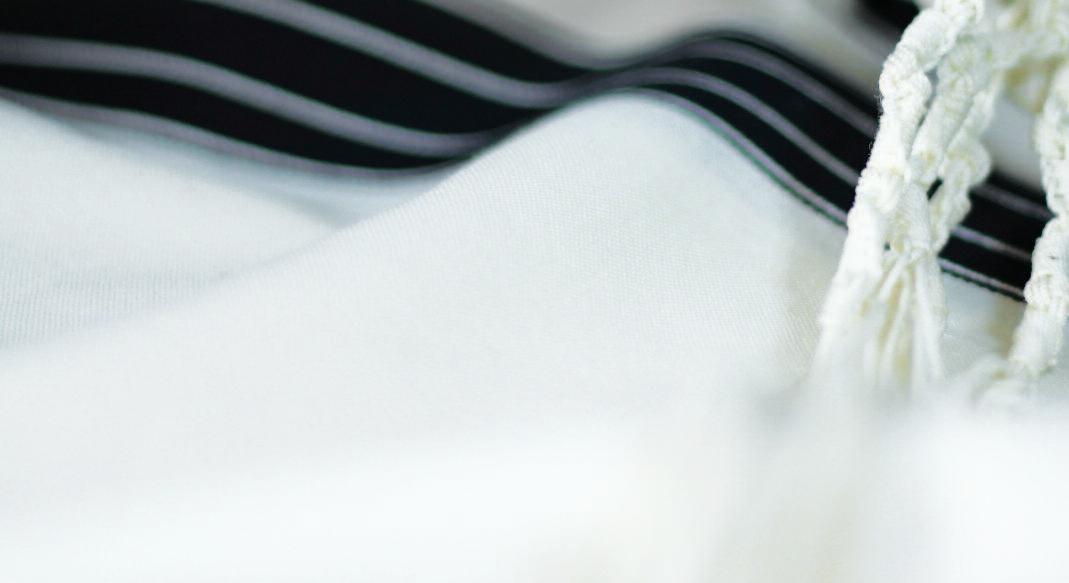
• When you kiss your tzitzis it protects you from a toothache. There are 32 strings on the tallis and the average person has 32 teeth!2
• During Kiddush Levana one shakes his tzitzis because he says the verse: “May the light of the moon be as the light of the sun.” This verse says that the night will be so bright (like the day) and then tzitzis will be required at night.
• One shakes his tzitzis during Tashlich to represent any mitzvos that he did not perform to his ut-
10-15%
12%
most ability, because the tzitzis represent all 613 mitzvos
• It is said that observing the laws of Shabbos properly is equivalent to observing the entire Torah3 and the mitzvah of tzitzis reminds us of all of the 613 mitzvos. Each tassel of the tzitzis has 39 revolutions, which corresponds to the 39 malachos. Furthermore, the 39 melachos can be divided into four groups (home, food, clothing, and making shoes). Just like the four groups of melachos, the revolutions are divided into four groups.
In addition, the revolutions are in groups of 7, 8, 11 and 13 and the melachos are also in groups of 7 (making shoes), 8 (home), 11 (food), and 13 (clothes).
• When holding the tzitzis during Shema one holds the tzitzis from the right side on top so that chesed (kindness) should prevail upon him.
SOUL NUTRITION
Wal-Mart carries kosher products in several hundred stores, including its Monticello store which caters to some 250,000 Jews who vacation in the Catskills.
KOSHER BY THE NUMBERS
The location of a kosher shelf in a supermarket can boost sales of kosher foods by as much as 10-15%.
$$ $ $
www.KosherSpirit.com • 23
1. See Maror by Rabbi Yitzchak Gornish, Kosher Spirit, Pesach 5770.
2. Sefer Chesed Le’Alofim 24:3. 3. Rambam, Hilchos Shabbos 30:15.
Kosher sales increased by 12% in 2010, thanks in part to an increase in the role of social media in kosher sales.
Israeli wine exports grew by $18,000,000 in the first 10 months of 2010.



24 • www.OK.org The most powerful Kosher tool... now in the palm of your hand. NEW KOSHER APP! KOSHER CERTIFICATION ~ Kosher Spirit, 391 Troy Avenue • Brooklyn, NY 11213 • 718-756-7500 • info@ok.org • www.ok.org 2 cutting-edge Kosher Apps now available as a free download on the App Store for your iPad, iPhone or iPod Touch The ~ Kosher Food Guide provides the most up to date database of products certified kosher by ~ Kosher Certification. Search by company or by category and have the latest info at your fingertips.



















 By Rabbi Ahron Haskel
By Rabbi Ahron Haskel






















 By Rabbi Yitzchak Gornish
By Rabbi Yitzchak Gornish













 Compiled by Dina Fraenkel
Compiled by Dina Fraenkel





